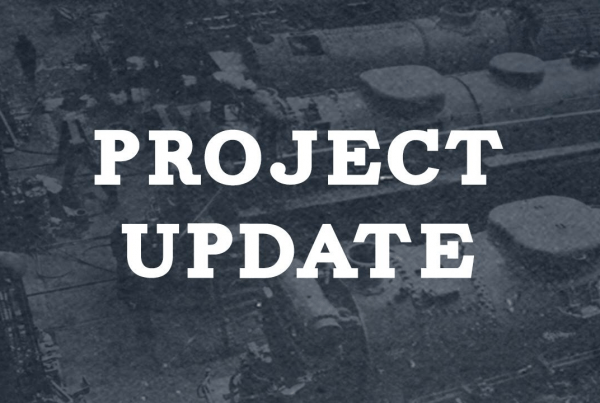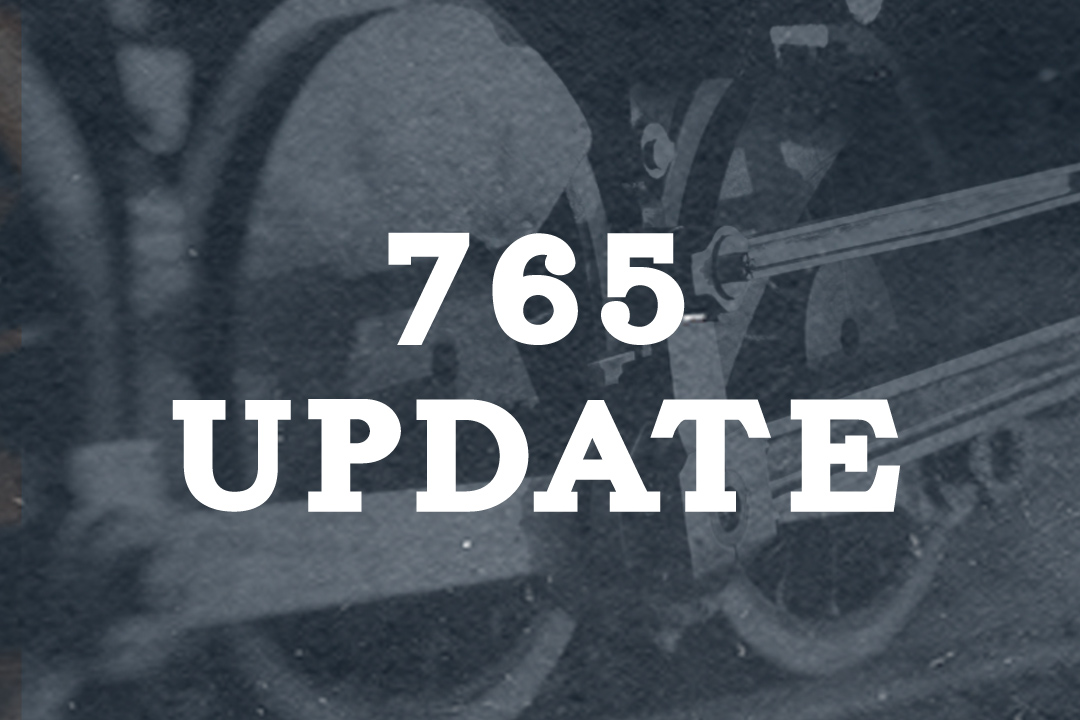Submitted by Steve Winicker
LAST WEEKENDS SHOP ACTIVITY
As usual things did not work out just as planned but many things were accomplished the past weekend. Mary and I managed to create two screens for the tender sumps. Austin and I removed the arch brick from the locomotive cab and the firebox. Due to other ongoing projects that is about all we finished on the 765. Other work that was done included some additional wood and brackets being added to both the Wabash Caboose and the Box Car. Rich Wolfgang produced a superior sample rafter for the Wabash Caboose and a much lower cost than previously was estimated. The SD9 received some new metal in the walkways and other parts. Joe Knapke Austin Raynor and John Keller chipped out and area of damaged concrete in the floor and poured a patch to fill the hole. On Sunday the 126 was loaded out and was on its way to its home in Ashley Indiana. Carl and Tim stocked the 141 with coal for the upcoming Christmas Train then worked on fitting watertight lubricator fitting for # 1’s valve gear, replacing open pipe. We followed up the day with some additional UT work on #1.
UPCOMING ACTIVITIES
With the upcoming annual meeting next Saturday, we will probably limit the projects going on the 765 to some relatively clean work. As soon thereafter as I can get a crew together, we will begin cleaning up the firebox and blowing out the flues, then cleaning out the firebox. Once that is done, we can clean out the smoke box and much of the real dirty work will be done and we can focus on winter repair projects.
SAFETY SENSE
Compressed gases are used for a variety of tasks. Compressed gases and the cylinders that store them are used for welding, powering industrial trucks and a variety of less common things. Many of us use them at home for fueling a grill. The convenience of compressed gas doesn’t come without a price though . . . we need to store, handle and use them properly or the consequences can be devastating. Here are some rules and recommendations for compressed gas cylinder storage.
– Store cylinders with their cylinder valves in the closed position
– Securely attach cylinder valve caps
– Separate cylinders according to their contents. Place oxygen cylinders at least 20 feet from any flammable gas cylinders or combustible materials, or separate by a noncombustible barrier at least five-feet high and with a fire-resistant rating of at least 30 minutes;
– Identify empty cylinders, and store empty cylinders separate from full cylinders
– Secure all cylinders while in storage and in use
– Ventilate all enclosed cylinder storage areas
– Keep cylinder storage away from fire and potential electrical hazards
– Ensure all cylinders are labeled to identify their contents. Do not trust the cylinder color code as identification method for cylinder content (Medical gas cylinders are to be color coded, but check the label to be certain.)
– Return any cylinder to the supplier if the label does not identify contents
– Always store and use acetylene cylinders in the upright position
– Avoid dropping, striking or impacting cylinders.
Following the rules and proper procedures for storing and using compressed gases will help assure that the Shop working environment will be safe.
SAFETY IS JOB 1
SAFETY FIRST ALWAYS


